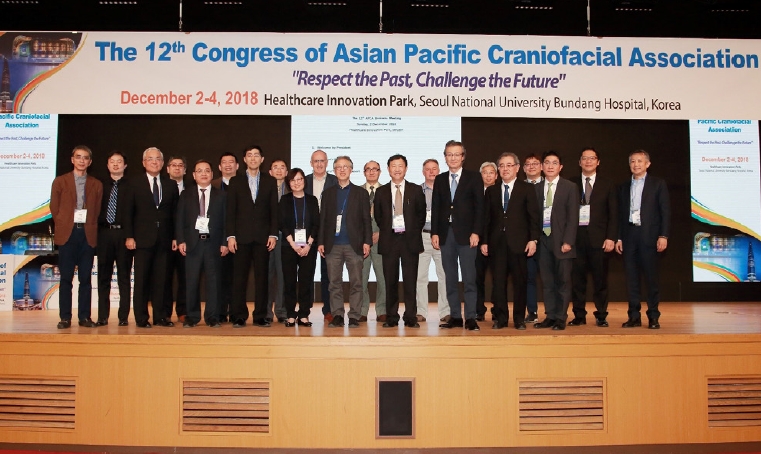Congratulations to the new role of Archives of Craniofacial Surgery as the official journal of Asian Pacific Craniofacial Association
Article information
I would like to express my sincere congratulations to Archives of Craniofacial Surgery (ACFS) on becoming the official journal of Asian Pacific Craniofacial Association (APCA). The decision reflects the devotion of ACFS’ editorial board, contributors, and readers.
Both APCA and ACFS have common roots in the seminal presentation by Dr. Paul Tessier on his revolutionizing ideas and groundbreaking results in craniofacial surgery at the 4th International Congress of Plastic and Reconstructive Surgery 1967 in Rome. Since then, the field of craniofacial surgery has evolved into an area dedicated by plastic surgeons, neurosurgeons, maxillofacial surgeons, and experts from other specialties.
APCA was founded in 1994 by 20 craniofacial surgeons from seven countries to furnish leadership and foster new advances in craniofacial surgery, especially in the Asian-Pacific region. APCA currently has members from Australia, China, India, Indonesia, Japan, Korea, Malaysia, Singapore, Taiwan, and Thailand. Biennial meetings have been held all over the Asian-Pacific region including, Beijing, Seoul, Shanghai, Singapore, Taipei, and Tokyo (Fig. 1). During these conferences, presentations of innovative ideas, intellectual discussions, and social exchanges have been made to promote and foster collaborative research and training of young and experienced surgeons alike.

Participants of the 12th Congress of Asian Pacific Craniofacial Association at Seoul National University Bundang Hospital, Korea in 2018.
While the aforementioned meetings have provided an exciting forum for offline discussions and exchanges, APCA’s purpose of intellectual discussions has been less productive online and in the form of publications. I strongly believe that ACFS will be the breeding ground for innovations for APCA members and craniofacial surgeons of the Asian-Pacific region and beyond.
ACFS is a peer-reviewed, open-access journal for articles related to craniofacial plastic and reconstructive surgery, operative techniques, clinical and laboratory research, and more. The journal initially began publishing under the title Journal of the Korean Cleft Palate-Craniofacial Association in October of 2000 and was printed biannually from 2000 to 2011. The journal name was changed to Archives of Craniofacial Surgery in 2012. The official language was changed to English in 2014, and the frequency of its publication has increased gradually to six issues per year [1].
While both APCA and ACFS have grown tremendously over the past two decades, craniofacial surgery has met new challenges over the past few years. With the increasing use of prenatal ultrasonography and genetic testing, the prevalence of congenital craniofacial anomalies has decreased significantly. Furthermore, birth rates decreased over the past decade in many Asian-Pacific countries, further reducing the overall cases of craniofacial surgery.
Scientific and medical advances may have resulted in a decrease of the total number of patients in need of craniofacial surgery, new technologies also have opened new possibilities for craniofacial surgeons [2]. The use of three-dimensional (3D) printing has advanced the field of facial trauma, microtia, and other congenital anomalies. Augmented reality and 3D simulations enable us to perform operations more accurately and even faster [3]. Clustered regularly interspaced short palindromic repeats technology may soon allow us to completely cure diseases such as hemifacial microsomia, syndromic vascular malformation, fibrous dysplasia, and many other conditions the treatment of which have been less satisfactory [4].
In this challenging and ever-changing era for craniofacial surgeons, collaborative efforts are paramount to the survival of our beloved field of craniofacial surgery. I would like to encourage all of you to share your ideas, thoughts, and expertise through ACFS.
Notes
Conflict of interest
No potential conflict of interest relevant to this article was reported.
